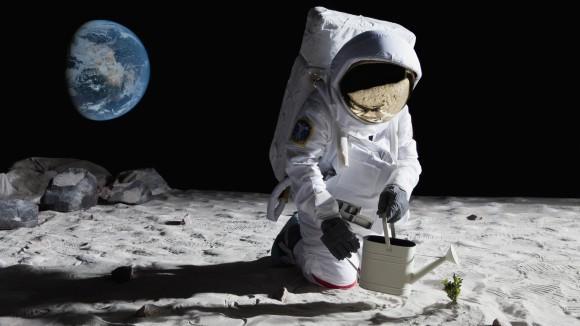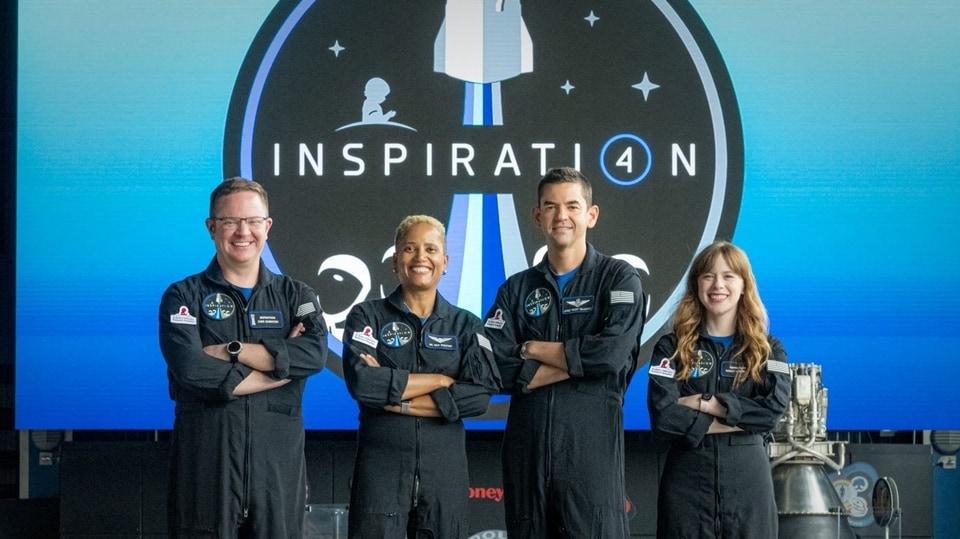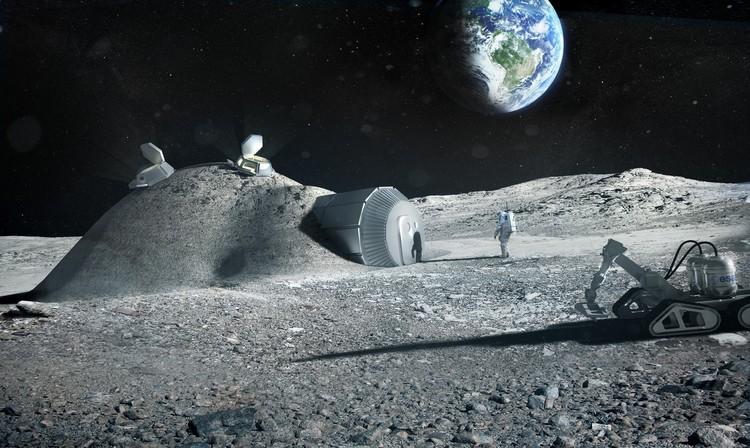By S. Anand Narayanan
Our human space exploration efforts include studying the effects of the space environment on life. Space biology is the discipline that explores the fundamental biological adaptations of organisms to the effects of different stressors such as weightlessness (e.g. a lack of gravity), radiation, etc., while present in the space environment. Space medicine, on the other hand, explores how to treat these adaptations if they are adverse to the organism’s ability to survive and thrive.

Living on the lunar surface. Photo Nature Scientific Reports.
We have made significant progress to further our understanding of how life adapts in low-Earth orbit from studies on various space stations (including Mir, Salyut, and the ISS) and the Space Shuttle; and future missions will increase our understanding of biological adaptations to the space environment from including a more diverse demographic of crew-members through our commercial and civilian space programs (e.g. SpaceX’s Inspiration-4). For example, recent work from Dr. Chris Mason’s group (@mason_lab), led by Dr. Eliah Overbey (@eliahoverbey), et al, will be studying the adaptations of the Inspiration-4 crew through high-resolution and multi-dimensional biochemical analyses, to show how a diverse cohort of civilian astronauts adapt to the dynamic and unique space environment. These studies will significantly benefit our human space exploration plans, as we aim to go beyond low Earth orbit and return to the Moon, this time to stay, through our Artemis program. We have much left to discover, given that we have only experienced living beyond the confines of low-Earth orbit during the Apollo program.

Crew of the successful 2022 Inspiration4 mission, which returned valuable medical data to researchers. Photo Hindustan Times.
Recently NASA’s Biological and Physical Sciences Division supported several investigations as part of its Thrive in DEep Space (TIDES) initiatives. These studies will include investigations of the effects of deep space radiation and different states of gravity (e.g. Lunar gravity and Martian gravity), as well as important studies of sex differences, as a few examples, related with our Artemis program, where we aim to send the first woman and first person of color to the Moon.
One example of a study investigating these environmental effects on biology is from Dr. S. Anand Narayanan at Florida State University, where this team will explore for the first time adaptations of the venous circulation to partial gravity, as well as the sex differences, related with our astronauts that have recently been observed to develop high-risk medical events of the venous circulation (e.g. venous thrombosis). This research will increase our understanding of the physiological adaptations to a lunar environment, as well as differences between female and male adaptations to the space environment, which we know very little about. Previous research studying the effects of partial gravity has been the focus of Dr. Marie Mortreux’s investigations (@M2BLab). Results showed that partial gravity exposure (such as lunar gravity and Martian gravity) led to a significant deconditioning of the musculoskeletal system and the existence of sex-based differences in muscle adaptation. Maintenance of the musculoskeletal system is crucial to ensure the general health and well-being of astronauts, as well as their operational performance to complete missions.

Sex-related differences in microgravity crew health and performance. Photo Blaze Press.
Space life science research benefits from more inter- and cross-disciplinary projects, applying and translating the basic science discoveries made from model organisms to human research findings. Technology developments, such as multi-omics, multiplex immunofluorescence, non-invasive physiological techniques (e.g. Doppler ultrasound), and novel quantitative data approaches (e.g. machine learning and artificial intelligence) will also aid with the integration and contextualization of these interdisciplinary studies. Finally, like the ISS brought together countries from across the world together to design, build, and launch the first science laboratory in space, future collaborative missions on the ISS and civilian missions like Inspiration-4 will bring together different STEAM disciplines and backgrounds to innovate and discover. These studies, and more, will increase our knowledge and understanding of the space environment’s effect on biology, as well as prepare ourselves as we return to the Moon together, this time to stay, with a crew more diverse than ever before.

Artist conception of a permanent lunar base. Photo Arch Daily.
ASP’s membership shares a mission to develop the next generation of spaceflight professionals and crew, and in doing so, to provide the means for achievement of key milestones in human spaceflight. To support professional development in this way, ASP continues to advance a spectrum of funding facilitation and professional opportunities.
Learn more about ASP’s work here.
